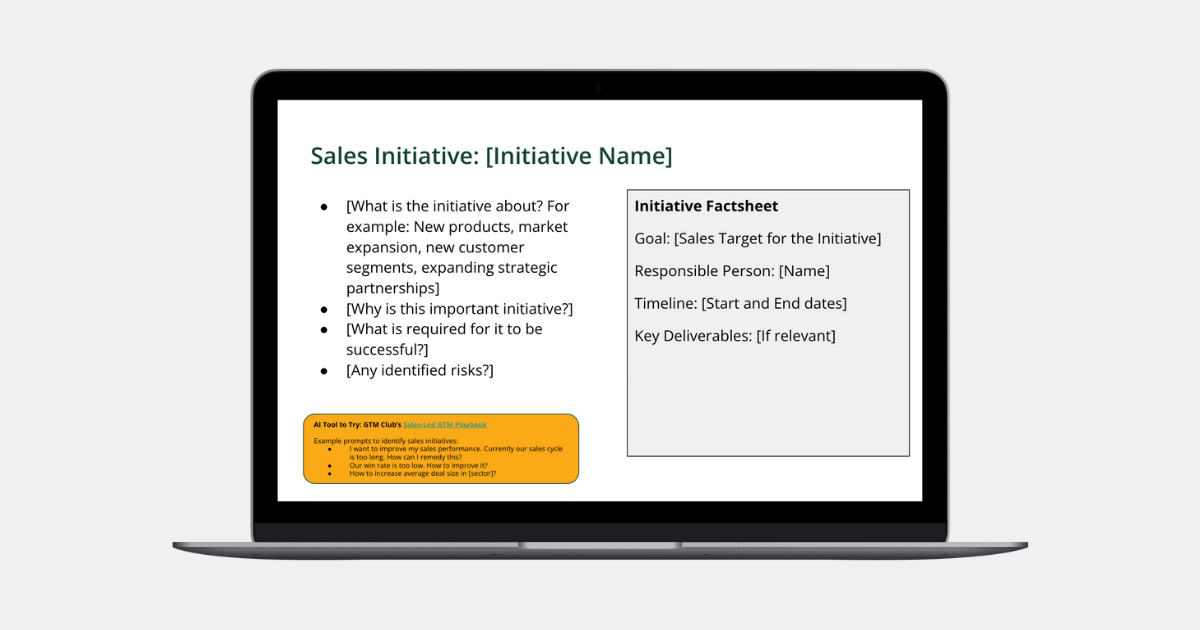How to Ask Great Questions During the Discovery
Effective discovery requires asking questions that progressively deepen your understanding of the prospect's current situation and desired state. Don't waste time asking surface-level questions. Instead, move to uncover genuine needs and motivations.

The clock is ticking, every question counts. When conducting discovery, sales representatives have a limited amount of time to question prospects and a limited number of questions they can ask. So they should consider beforehand what to ask and what to research independently before the discovery call. Sellers should ensure their questions delve beyond surface-level information to uncover genuine needs, pains, and motivations.
Effective discovery relies on asking insightful, layered questions that progressively deepen one's understanding of the prospect’s world. It's like peeling an onion.
Listen Kyle Asay explain the Three Levels of Questions with concrete examples.
Let's explore three levels of questioning that progressively deepen our understanding of the prospect's situation. From gathering basic information to understanding the prospect's personal motivations, each level serves a unique purpose in building a comprehensive view of the prospect's needs. This approach closely resembles the "Sandler pain funnel".
Discover Background Information
Level One questions are preliminary questions that start a conversation by gathering basic thoughts, facts, behaviours, and situations. They provide a foundation to gain an initial understanding of your prospect's context. That being said, these are also the questions you should have found the answers to when prepping for the discovery call. Most common examples would be asking about basic info like the company's revenue model, the prospect's role, or other readily available details. A Google search, a quick visit to LinkedIn, or an AI prompt should get you a long way with Level One questions.
Ideally, skip this level or use it to quickly show prospects that you have done your homework by validating your findings:
“Based on your annual report, I understood that you are aiming for a substantial growth in EMEA by focusing especially to the UK and France markets. How has that progressed during Q1?”
Discover Operational Details
After gathering high-level information through your research, it's time to dive deeper and understand the details better. Level Two questions focus on operational specifics relevant to the prospect's department or organisation. These questions uncover how the prospect's team operates and supports broader business goals. Building on the previous example, you could ask, for example:
“How is your team supporting the growth goals in EMEA or specifically in the UK or France?
After this, you can use the slightly adjusted 5WH1 questioning technique to learn more about the situation. Building on our example about thriving for growth in EMEA:
- What is currently slowing you down in the UK or France?
(Prospect: "Occasionally, the sales cycle is too long.") - Who is impacted by the bottleneck you mentioned?
(Prospect: "Our enterprise sales team in the UK. Our CRO feels the pressure building up to solve this.") - Where in your organisation or sales process do you see this happening?
(Prospect: "Deals get stuck in contract negotiations.") - When does this slowdown become most acute, or is it constantly present?
(Prospect: "The issue is more or less constant, but it gets terrible during the last month of each quarter.") - Why do you think this is happening in the first place?
(Prospect: "Our legal can’t help us as quickly as we hope".) - How would your progress towards your EMEA growth goals change if we could solve this bottleneck?
(Prospect: "If we can progress deals through contract negotiation at the same pace as elsewhere, we would catch up with our targets during Q3.")
Discover Personal Drivers
Level Three questions dig even deeper to uncover emotional drivers and personal motivations. These questions are compelling as they help understand the individual's underlying reasons for considering a purchase. You can also use these questions to identify champions and uncover deeper motivations that can drive deal momentum. These are the questions that truly help you win more business!
“If we would remove the bottleneck hindering your growth in EMEA, would that help you to reach your personal KPIs?”
If you find out you are struggling to break from Level Two to Level Three, the Five Whys questioning technique can help you. Here's an example building on our EMEA growth scenario:
Salesperson (Why 1): "You mentioned that your sales cycle is slowing down at the end of each quarter, and it’s somehow related to your legal team. Why are contract negotiations taking so much time?"
Prospect: "Our legal team is overwhelmed with the volume of contracts."
Salesperson (Why 2): "Why is the legal team unable to handle the volume?"
Prospect: "They're manually reviewing each contract, and we don't have a standardised process."
Salesperson (Why 3): "Why is there no standardised process?"
Prospect: "We've grown quickly and haven't had time to develop standardised processes."
Salesperson (Why 4): "Why hasn't process standardisation been prioritised?"
Prospect: "Legal team has been understaffed and focused on urgent matters."
Salesperson (Why 5): "Why has the team remained understaffed despite the growing workload?"
Prospect: "Budget for additional legal headcount was allocated to sales expansion instead, as that was the priority."
Salesperson (Level 3 Question): “So if we were to find a way to reduce manual work in legal, reduce end-of-quarter hassle and catch up with growth, all this with current headcount in legal, would this impact your personal KPIs?”
This series of "why" questions helps uncover the root cause: a lack of standardised contract processes and automation. Now, you can better position your solution to address this specific challenge and its impact on your contacts' personal drivers, like bonuses from reaching set KPIs and possible boosts for career aspirations after solving a key issue the company is facing.




